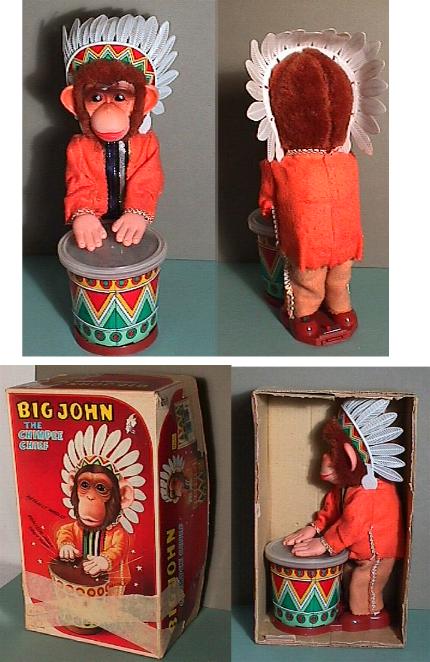More recently, 17-year-old Kiri Davis of Harlem wanted to prove that we have liberated ourselves from racism's demons of self-hate and low self-esteem.
So Davis--a student at Manhattan's Urban Academy who participates in the Reel Works Teen Filmmaking program, a free after-school program supported by HBO--directed and produced an 8-minute documentary, "A Girl Like Me." In it, Davis showed 21 girls identical dolls, distinguished only by their color: black and white. Fifteen girls, all 5 years old, thought black dolls were "bad" while white dolls were "nice." The little girls identified with the "bad" black dolls.


5 comments:
I, too, found this item to be entirely unrelated to Native issues (other than the accompanying illustration, which was not related to the article)
I said how this posting applies to Indians in my comment.
I must've written several hundred times on my website, in my newsletter, and in this blog about how stereotypes harm Indians. In particular, I've quoted several Indians who said they were embarrassed or ashamed of their heritage as children.
I've also quoted several psychologists and educators, including Indian psychologists and educators, who have noted the connection between stereotypes and poor self-image. For instance:
I point to the American Indian Mental Health Association of Minnesota's 1992 position statement supporting the total elimination of Indian mascots and logos from schools. "As a group of mental health providers, we are in agreement that using images of American Indians as mascots, symbols, caricatures, and namesakes for non-Indian sports teams, businesses, and other organizations is damaging to the self-identity, self-concept, and self-esteem of our people. We should like to join with others who are taking a strong stand against this practice."
--Dr. Cornel Pewewardy (Comanche/Kiowa), "Why Educators Can't Ignore Indian Mascots"
In short, I've explained connections such as the above many times. Read about some of them in The Harm of Stereotypes: Facts and Evidence. Or take my word for it: The case for a connection is rock-solid.
"Self-image mostly is determined by realities and not much at all by simple symbols."
As I said, I've posted hundreds of statements and arguments disputing this claim. I refer you to all these postings. When Native leaders like Vine Deloria Jr. and Wilma Mankiller say stereotyping is among the worst problems facing Indians, I believe them.
I don't think people should attack stereotypical symbols to the exclusion of attacking "real" problems. I think people can attack both in a program of social change. For instance, when you point out that a mascot is stereotypical, you often end up discussing the history of a tribe and how it got to its present situation.
As for me, I'm a writer type far removed from the harsh realities of life on the rez. What I'm doing here is the best way I can contribute to solving the set of interrelated problems. If my skills lay in opening health clinics or starting businesses rather than analyzing stereotypes, I'd do that instead.
"Where is the symbol or mascot or stereotype that determined my cousin's self-image?"
Seeing oil-drilling crews or sheriff's departments that are predominantly white is what perpetuates discriminatory hiring practices. People aren't born racists; they don't necessarily mean to exclude minorities. They just believe that minorities don't want these jobs or have the "tools" to accomplish them.
So the stereotype that only white people are smart or tough enough to take these jobs contributes to who gets hired. If people didn't think of Indians as savages, drunks, or a "vanishing breed," they'd get hired in much greater numbers. In fact, they'd probably get hired at the same rate as everyone else.
If you don't think challenging stereotypes is valuable, you're sure wasting a lot of time commenting on this blog. What's up with that? And how do you explain being a fiction writer rather than, say, a doctor or lawyer? Tell me how a sci-fi story starring an Indian helps someone overcome an addiction or get a job.
Your argument kind of dismisses the whole point of telling stories: in books, movies, comics, etc. How many of these really contribute to anyone's physical or mental well-being? Should we eliminate the arts and spend all our resources on such bottom-line concerns as housing, jobs, and health care? Why not, if that's all that matters?
Incidentally, a note to "anonymous." Let's recap:
Black children feel bad about black dolls. Native children feel bad about Native stereotypes. The pictured doll represents an Indian chief as a chimpanzee.
Gosh, I can't imagine what the connection is there. Nope, that's a real puzzler, all right. Is there a rocket scientist in the house who could explain the point to us?
How about the Ronald McDonald pin in the next day's posting? Was that any clearer to you? Or were you equally mystified about how that might affect a child's self-esteem?
My editorial policy is to occasionally post items of multicultural relevance--i.e., items that refer to the clash of cultures or minorities vs. the majority--even if they don't explicitly mention Natives. My posting titled "Is America a Christian or a secular nation?" is a good example of that.
Russ and I were talking about the arts in general, not government funding of the arts. When he said "Attacking and removing symbols is energy misguided," he implied my efforts on this website and blog are misguided. Which is ironic considering he works primarily as a writer, I believe--same as me.
So, "anonymous," you're now "not a sioux"? You can input a proper name without having to register with Blogger, you know. Have you tried doing that?
Post a Comment